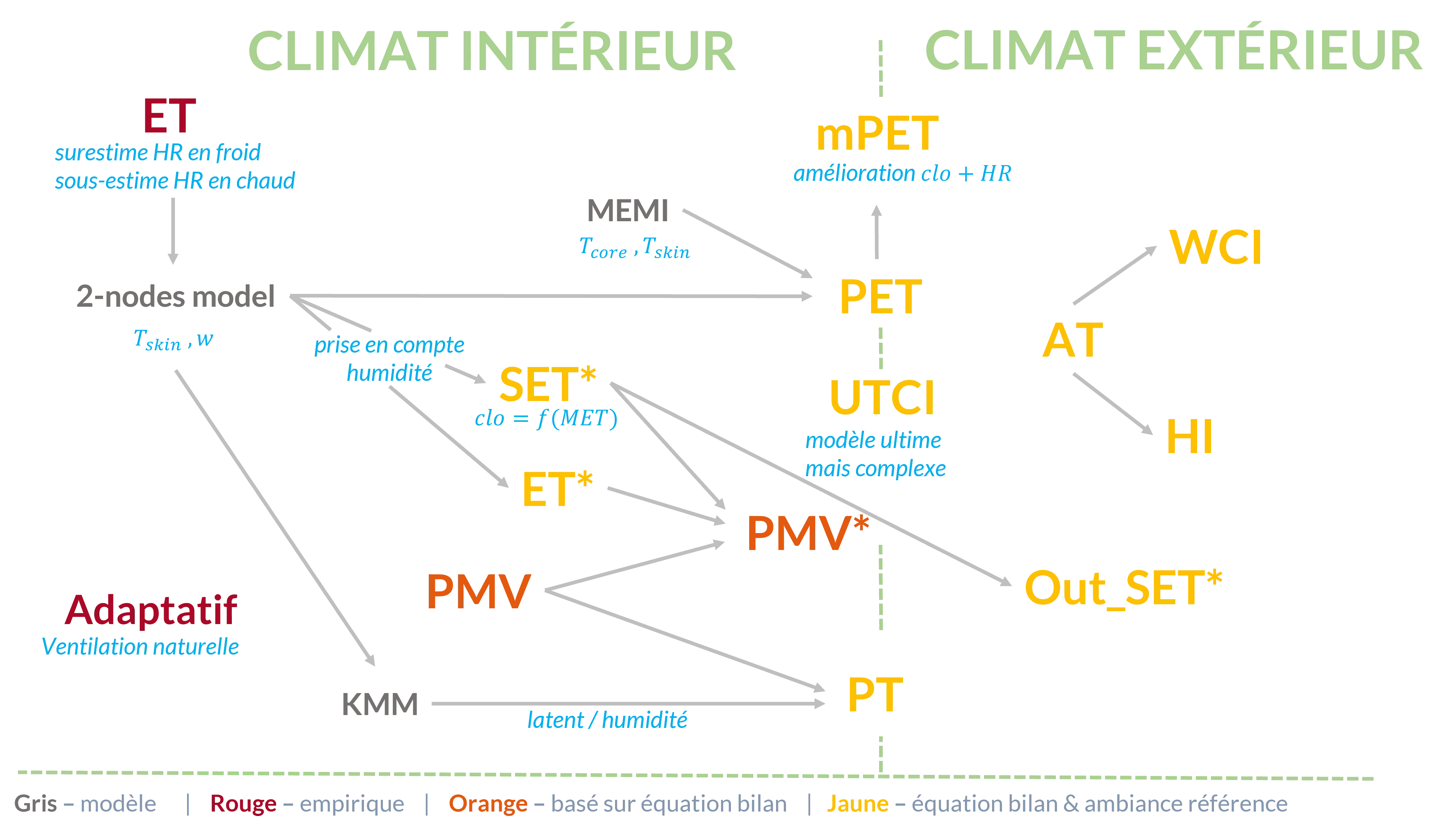Comfort indexes
Introduction
A wide variety of comfort indicators were developed between the early 20th century and today. Figure 1 illustrates some of them, based on empirical relationships (in red), heat balance equations (in orange) or using a “reference atmosphere” to assess comfort (in yellow).

Which model should be used?
Empirical models have the advantage of being well adapted to the situations for which they have been established. A contrario when ambient conditions change, or outside the validity condition range, it is not possible to transpose the results. For generic situations, models based on balance equations should be preferred.
The most famous steady-state equation indicator is Fanger’s PMV. It connects the thermal load on the individual related to his environment (i.e. a heat flux lost or received Watts) to a thermal sensation, called Predicted Mean Vote, and is valid in an indoor environment. In addition to the heat and vapour transfer equations on the surface of the skin and clothing, it uses equations related to the physiology of the individual: for example, ventilatory flow is linked to the level of metabolic activity.
Transient indexes, such as the Standard Effective Temperature - SET (or the transient variant of PET), are based on a “bio-mathematical” model of human metabolism, including metabolic temperature regulation reactions (sweating, perspiration, vasomotricity), to determine the physiological response of the exposed individual to his environment. Such models allow for the determination of skin temperature, central body temperature and skin wetness (a quantification of “sweatiness”).
It is then necessary to introduce the notion of “transposition to a reference environment”. The principle is as follows: it consists in determining the operative temperature of a reference environment that would cause the same physiological reactions as the real environment (see illustration Figure 2).

In other words: suppose we put the individual in an office-resembling environment (no solar flux, low air velocity, clothing adapted to the activity performed, relative humidity of about 50%) and increase the operative temperature until the physiological reaction is the same as that obtained in the real environment.
The temperature obtained is then the comfort indicator, for example the SET (Standard Effective Temperature) or the PET (Physiological Equivalent Temperature).